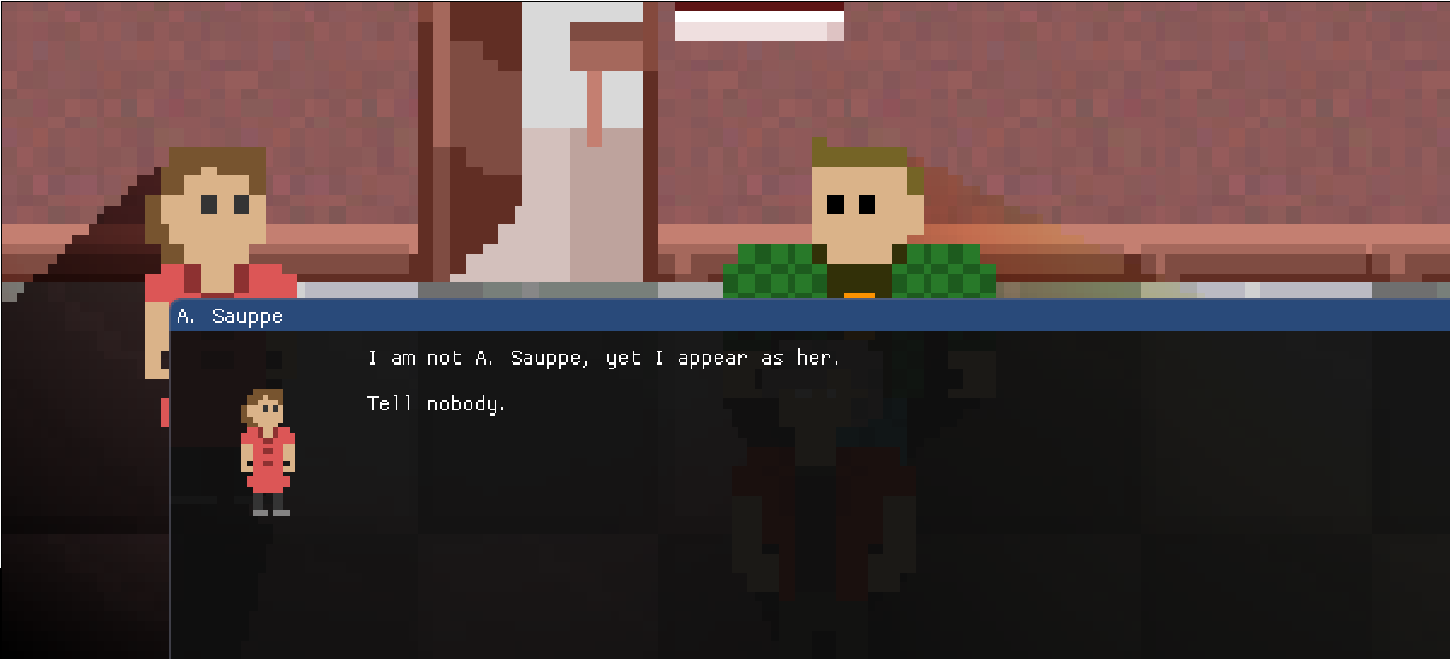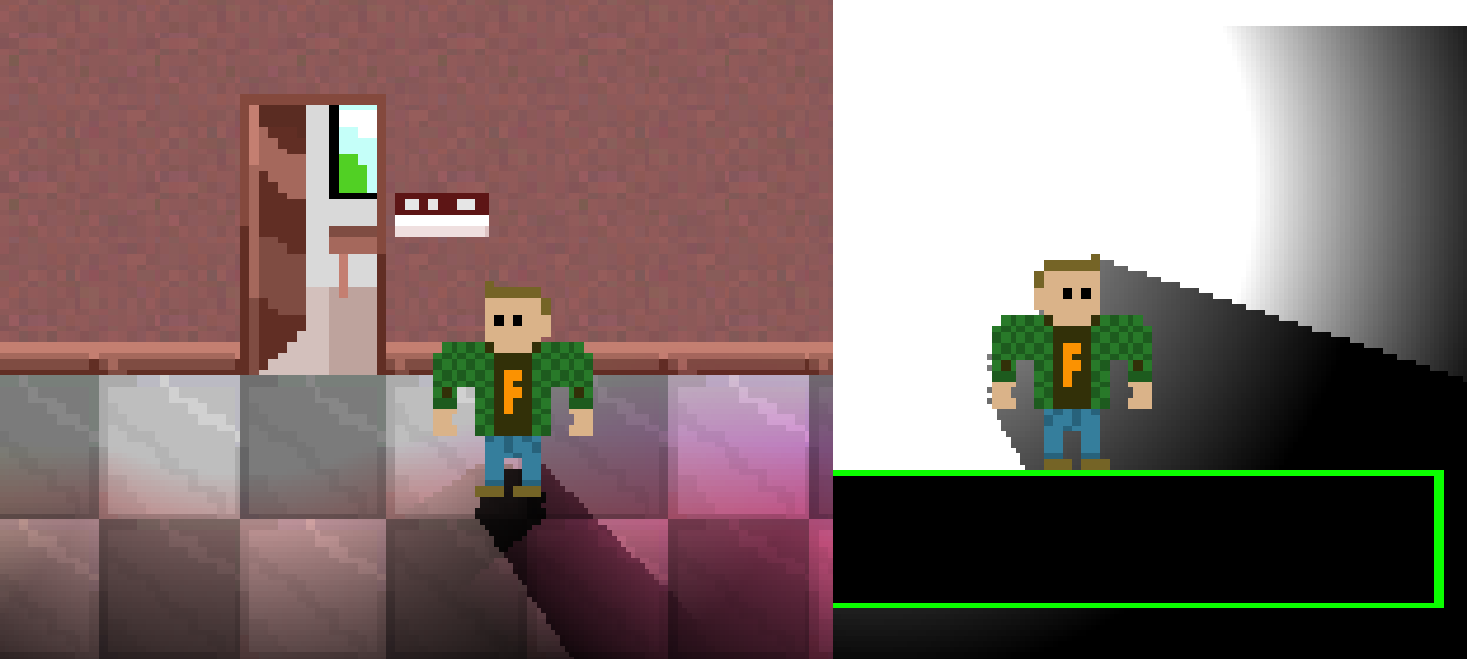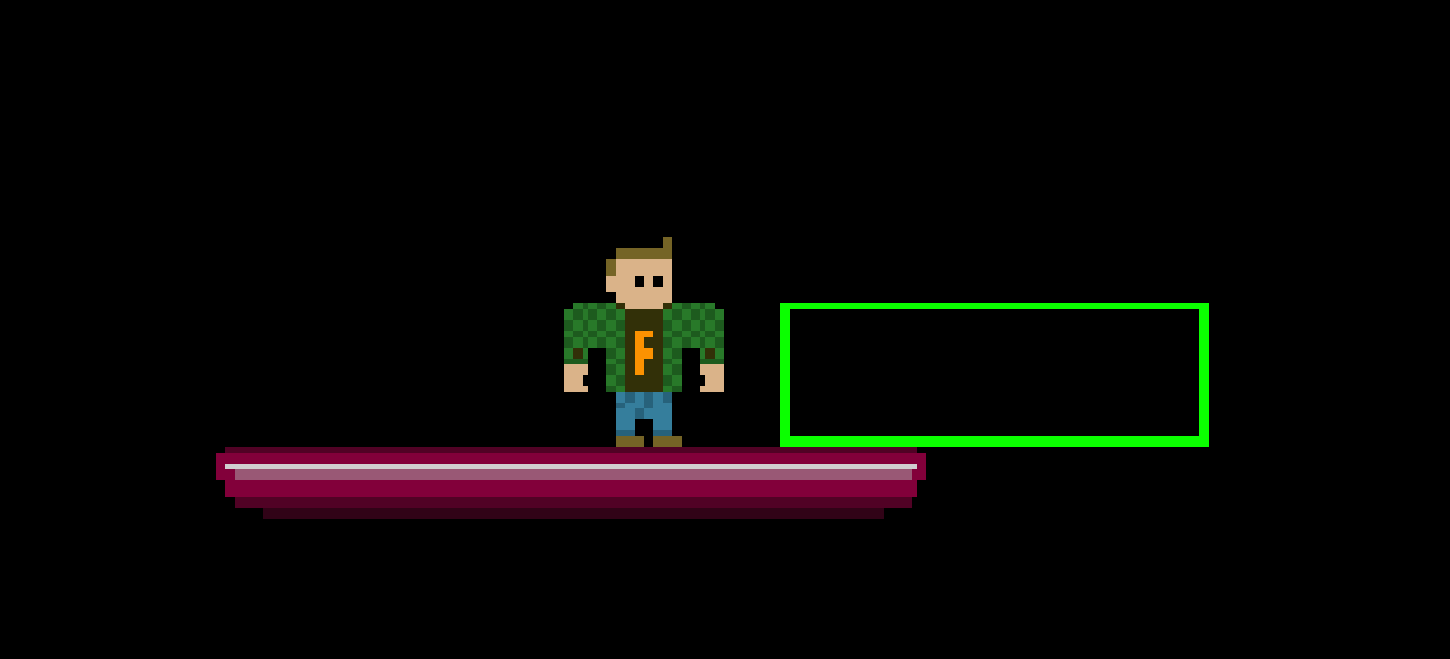Key notes for running this circa 2023:
- Set
JAVA_HOMEto an installation of JDK 11 - Set IntelliJ "Build, Execution, Deployment -> Build Tools -> Gradle -> Build and run using" to "IntelliJ IDEA"
- Run from
TestGame.javain the test sources
To make a fat runnable jar,
- Check out
fat-jarbranch- All Java source was converted to Kotlin
- Mixed Java/Kotlin content was removed to fix Gradle builds
- Run
.\gradlew fatJar, which creates a standalone JAR inbuild\libs - Copy the
worldsfolder adjacent to the JAR
A simple 2D game engine developed for the Makeshift group at University of Wisconsin-La Crosse.
This engine is designed to be extremely simple to use, quick for prototyping, and friendly to beginners. Animation should be as simple as loading in GIFs; geometry rendering should be as simple as specifying rectangle coordinates and size. The core engine is written in Kotlin and is interoperable with Java during game development. The graphical systems are built on LWJGL 3.2.3 and do not rely on any bloated 3rd-party library dependencies.
It was developed as a passion project/hobbiest endeavor. Contributions would be appreciated, but the end result isn't expected to be amazing. We're looking for a student-made game in a student-made arcade cabinet. We're doing this purely for fun. Enjoy!
This project requires the use of a Kotlin-capable IDE for development. I recommend IntelliJ Community, which has excellent Kotlin integration. Importing this repository as a Gradle project should download all the necessary libraries and dependencies to build and run.
A rudimentary test game is located in the class net.jibini.check.TestGame
which demonstrates lighting, physics, UI, animation, and other key engine features.
The graphical backend of this game requires modern OpenGL support, but relatively low graphical horsepower. Check Engine is compatible with Windows on X86/64 and Linux on ARM32/64. It is actively tested on the Raspberry Pi 4 and can use either OpenGL 4.3 Core or OpenGL ES 3.0.
- 4-8 GB system memory
- 512 MB or more VRAM
- OpenGL 4.3 Core or OpenGL ES 3.0
- JDK or OpenJDK 8 or higher
- Windows on
x86/x86_64 - or Linux on
armhf/aarch64
The engine maintains a set of singleton instances of several important game
elements. Any class annotated with @RegisterObject will automatically be
created and maintained over the lifecycle of the game. Several game components
can be initialized on game boot, updated during the runtime of the game, or
called on specific events during gameplay.
Check out this wiki page
for more details and instructions. Those familiar with Spring Boot's @Autowired
and @Component stereotypes will feel right at home.
Rendering in this engine is either performed via OpenGL 4.3 Core or OpenGL ES 3.0.
To switch the engine to OpenGL ES mode, create a file named opengl_es in the
project root directory. All natives distributed with this engine, including
the custom build of ImGui, are supported
on armhf and aarch64.
Pre-packaged functionality includes ImGui, specifically a custom build of the Java bindings. Game developers who use this engine can quickly and easily add UI to their games.
This dialog UI was created with very few lines of code.
On-screen animations, such as character walk cycles and attacks, can be stored as GIFs and loaded just like any other photo. Animated GIFs are automatically converted into sprite sheets by the engine, which also renders the animations as if they were any regular texture.
// Load an animated texture in one line of code.
Texture animated = Texture.load(Resource.fromClasspath("character/attack.gif"));Raytracing is a marketing buzzword, I know.
Multiple lights can be placed anywhere in a level, providing an atmospheric and pleasant feel. The lighting algorithm traces a collection of vectors eminating from a lighting source, storing their length in a texture for later reference. This is similar to a depth texture used in 3D shadows. The shader finds the distance between each pixel on screen and the light, then compares that distance to the stored rays in the raytraced depth texture.
The results vary, but here are a couple of examples:
The game engine provides AABB collision detection and resolution between entities and static game elements. The physics engine also accounts for vehicle constructs, such as a player travelling on a platform; platforms keep players on them and provide velocity if they jump off.
It seems simple, but there's a lot going on under the hood. Entities in the game world are stored in a constantly-maintained quad tree. The number of collision checks in the world are greatly reduced by placing entities into a tree of buckets.



